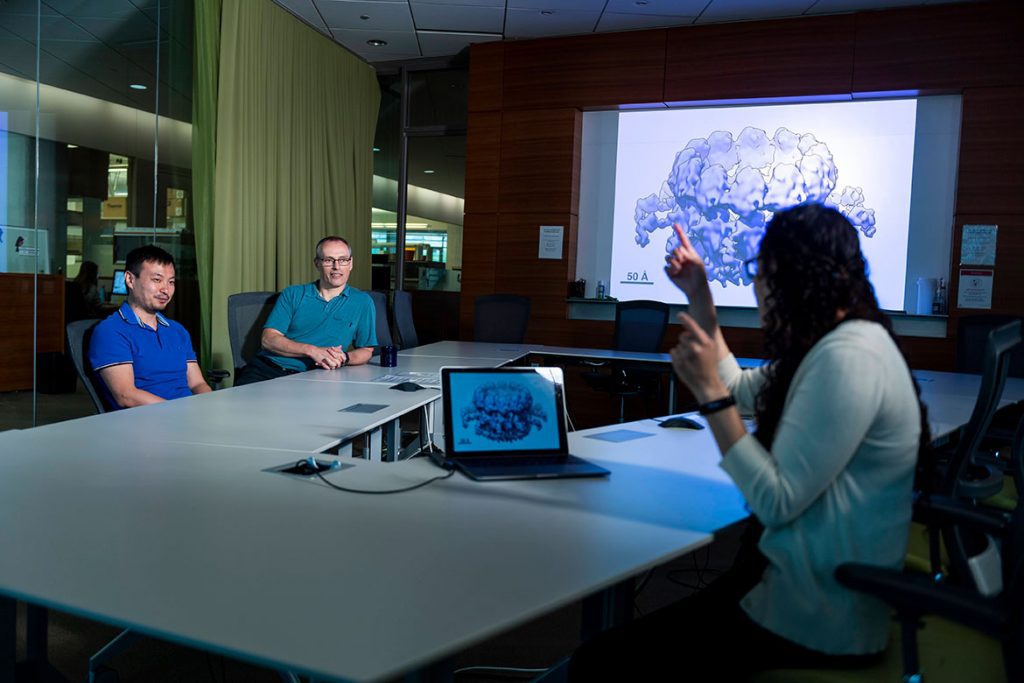27 Sep Resilience: How COVID-19 challenged the scientific world

Members of the Ahlquist Lab discuss a cryo-EM image of the “viral crown” RNA replication complex responsible for genome replication in viruses like SARS-CoV-2.
We’ve all been experiencing science in real time.
In late 2019, a novel coronavirus began spreading. Rapid change and growing uncertainty became just as much of a threat as the virus itself.
Over the past 18 months, the COVID-19 pandemic unleashed a seemingly untold human, social, and economic wave of devastation — over 4.7 million lives have since been lost. Others were displaced by job loss, isolated from family and friends, and disconnected from childcare and other services.
And the damage has been disproportionately shouldered by people of color, the working classes, the poor, and millions who live on the economic and social margins worldwide.
For this story, we dialed into video calls with scientists and researchers at the Morgridge Institute for Research and the University of Wisconsin-Madison to reflect on what has collectively happened. Those conversations held notes of promise, resilience, and lessons learned from a damaging and challenging experience.
The pandemic still isn’t over, but the lessons learned remain — and there are more lessons to come. Our scientists set the example for how to fearlessly tackle whatever happens.
This isn’t just a story about science, but a story about community and how people came together to work for the public good.
Sections included:
- A house with no furniture
- The great pivot: the desire to make a difference
- How we changed as scientists
- How we changed personally
- A better model for public understanding
- Endgame: the space race against viruses



